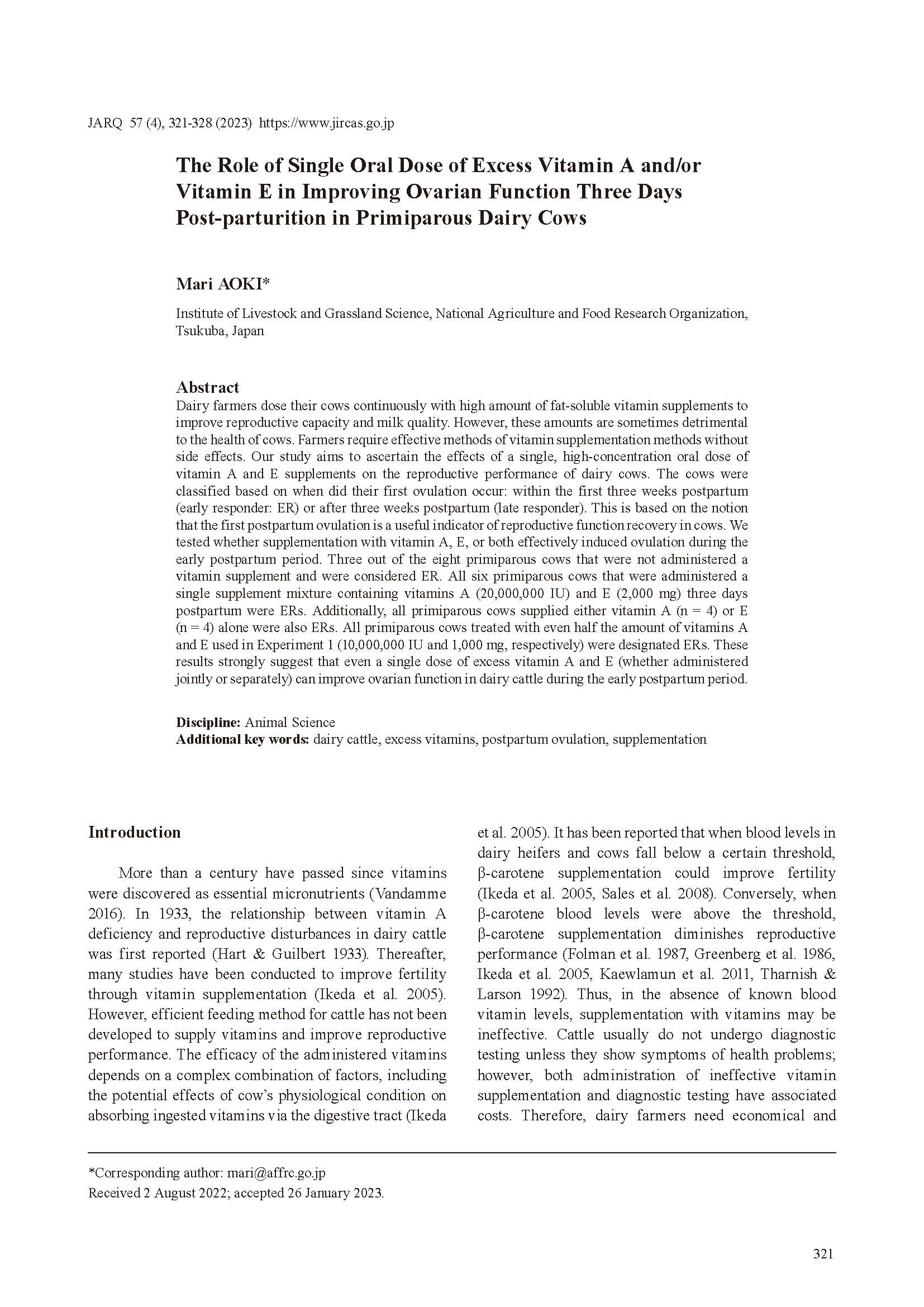The Role of Single Oral Dose of Excess Vitamin A and/or Vitamin E in Improving Ovarian Function Three Days Post-parturition in Primiparous Dairy Cows
Japan Agricultural Research Quarterly
| ISSN | 00213551 |
|---|---|
| NII recode ID (NCID) | AA0068709X |

Full text
jarq57-4_321-328.pdf940.9 KB
Dairy farmers dose their cows continuously with high amount of fat-soluble vitamin supplements to improve reproductive capacity and milk quality. However, these amounts are sometimes detrimental to the health of cows. Farmers require effective methods of vitamin supplementation methods without side effects. Our study aims to ascertain the effects of a single, high-concentration oral dose of vitamin A and E supplements on the reproductive performance of dairy cows. The cows were classified based on when did their first ovulation occur: within the first three weeks postpartum (early responder: ER) or after three weeks postpartum (late responder). This is based on the notion that the first postpartum ovulation is a useful indicator of reproductive function recovery in cows. We tested whether supplementation with vitamin A, E, or both effectively induced ovulation during the early postpartum period. Three out of the eight primiparous cows that were not administered a vitamin supplement and were considered ER. All six primiparous cows that were administered a single supplement mixture containing vitamins A (20,000,000 IU) and E (2,000 mg) three days postpartum were ERs. Additionally, all primiparous cows supplied either vitamin A (n = 4) or E (n = 4) alone were also ERs. All primiparous cows treated with even half the amount of vitamins A and E used in Experiment 1 (10,000,000 IU and 1,000 mg, respectively) were designated ERs. These results strongly suggest that even a single dose of excess vitamin A and E (whether administered jointly or separately) can improve ovarian function in dairy cattle during the early postpartum period.
| Date of issued | |
|---|---|
| Creator | Mari AOKI |
| Subject | dairy cattle excess vitamins postpartum ovulation supplementation |
| Publisher | Japan International Research Center for Agricultural Sciences |
| Received Date | 2022-08-02 |
| Accepted Date | 2023-01-26 |
| Available Online | |
| Volume | 57 |
| Issue | 4 |
| spage | 321 |
| epage | 328 |
| DOI | 10.6090/jarq.57.321 |
| Language | eng |
